The Åland Islands are one of Northern Europe’s best-kept secrets. Here's everything you need to know about this popular summer destination that Scandinavians would prefer to keep to themselves.
Nestled between Finland and Sweden in the Baltic Sea, this autonomous archipelago offers rugged coastlines, sun-drenched meadows, charming harbours, and a distinctive culture shaped by both Swedish and Finnish influences.
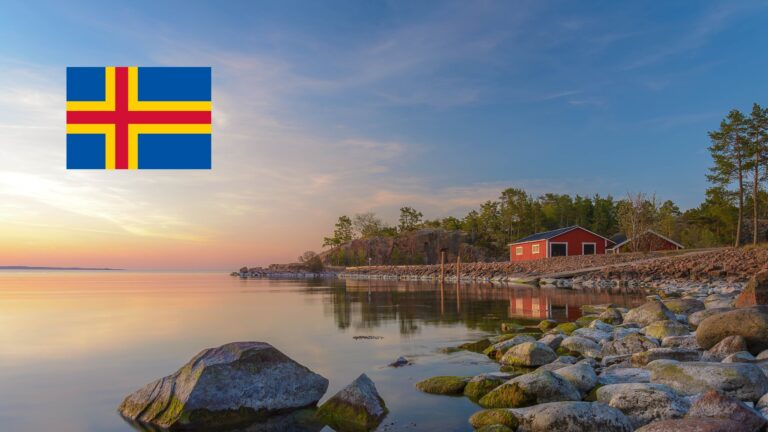
Whether you’re a nature lover, history buff or simply seeking a peaceful escape, Åland makes for a rewarding and memorable detour on any Nordic itinerary.
Although relatively unknown outside the Nordic region, the islands' natural beauty and untouched landscapes offer a refreshing break from bustling city life.
What Are the Åland Islands?
The Åland Islands, or simply Åland, form an archipelago of around 6,700 islands and skerries located at the entrance to the Gulf of Bothnia. Although technically part of Finland, the islands lie much closer to Sweden and feel culturally more Swedish than Finnish.
The main island, Fasta Åland, is home to about 90% of the islands’ 30,000 residents. The capital, Mariehamn, is a compact and walkable town located on a narrow peninsula, flanked by harbours on both sides.
The islands enjoy a maritime climate, with mild summers and long hours of daylight from late May to early August. The peak visitor season is during the summer months, although spring and early autumn also offer pleasant weather and fewer crowds.
A Unique Political and Cultural Identity
Åland is not quite like anywhere else in the Nordic region. While the islands are under Finnish sovereignty, they enjoy a high degree of autonomy, with their own flag, parliament, postage stamps and even car registration plates.
This arrangement stems from a decision made by the League of Nations in 1921, following a post-war territorial dispute between Sweden and Finland. Åland was awarded to Finland but granted extensive self-rule to protect its Swedish-speaking culture.
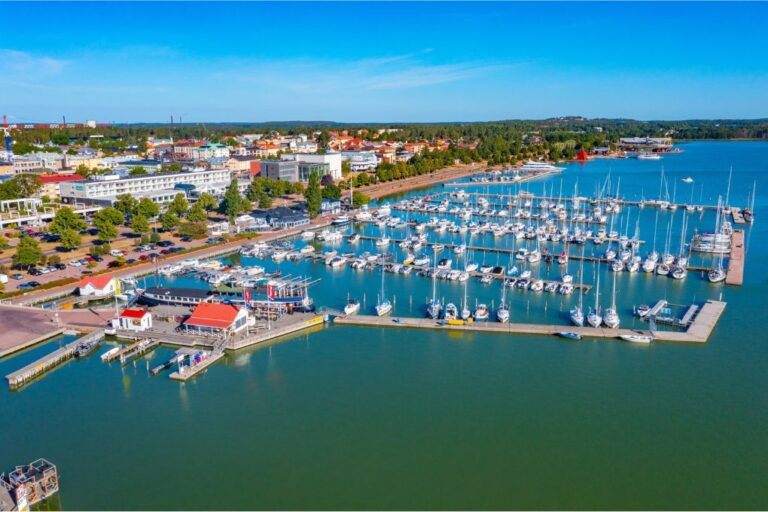
The islands are also demilitarised. No military presence is permitted, and Åland residents are exempt from conscription. This status has helped shape the peaceful, open character of the region.
Swedish is the sole official language of Åland. Around 86% of the population speak it as their first language, and it is the language used in schools, local media and public life. Finnish, while understood by some, is rarely spoken in daily conversation. For visitors, English is widely spoken, particularly in the hospitality industry.
Ålanders are proud of their unique identity, which blends Nordic efficiency with island self-reliance. You’ll find an independent spirit and strong sense of community throughout the archipelago.
Åland and the Island Games
Although small in size, Åland plays an active role in the international community of island territories through its participation in the Island Games.
This biennial sporting event brings together athletes from islands and small territories around the world, including the Shetlands, Guernsey, Gotland and the Isle of Man, to compete in a wide range of sports from athletics and swimming to shooting and football.
Åland has been involved since the very first Island Games in 1985 and proudly hosted the event in 2009. That year, hundreds of athletes and supporters from across the globe descended on the archipelago, giving Åland a chance to showcase its facilities, hospitality and sporting spirit.

The legacy of the event remains visible in upgraded sports infrastructure and a continued enthusiasm for grassroots sport throughout the islands.
Things to Do in the Åland Islands
Despite their small size, the Åland Islands offer plenty of variety. Whether you’re interested in maritime history, outdoor adventure or simple relaxation, there’s something here to suit every pace of travel.
However, most businesses in Åland unofficially accept the Swedish krona, although this won't always be advertised.
Explore Mariehamn
Founded in 1861 and named after Russian Empress Maria Alexandrovna, Mariehamn is the cultural and commercial heart of Åland. With just over 11,000 residents, it has the feel of a small town rather than a capital city, yet it’s packed with charm and local life.
The town is located on a narrow isthmus between two harbours, which gives it a strong maritime identity and easy access to the sea from almost anywhere.
Mariehamn is best explored on foot or by bicycle. Strolling along its broad, tree-lined avenues—such as Esplanaden, modelled after Helsinki’s grand boulevards—you’ll pass pastel-coloured wooden villas, leafy parks, small boutiques and cosy cafés. The town’s laid-back pace makes it ideal for a slow morning or an unhurried afternoon.
The maritime heritage of Mariehamn is impossible to miss. The town was once a hub for ocean-going sailing ships, and the spirit of that era lives on at the excellent Åland Maritime Museum.
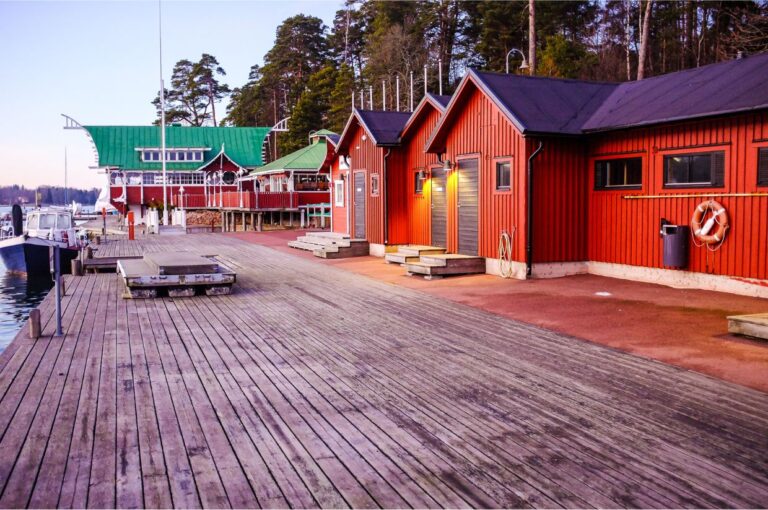
Here, interactive exhibits and authentic artefacts tell the story of the islands’ seafaring past, from local fishing boats to global trade routes. Moored just outside is the Pommern, a fully rigged four-masted sailing ship that once crossed the world’s oceans and now serves as a unique museum experience in its own right.
In the summer, Mariehamn comes to life with events and open-air activities. Lilla Holmen, a small island just off the eastern harbour, is a favourite local escape, with a family-friendly beach, bird sanctuary and café.
A bit further inland, cultural venues like the Åland Art Museum and Åland Cultural History Museum provide more context on local life and identity. The town is also home to Mariepark, an outdoor venue that hosts concerts, festivals and community gatherings, especially during the warmer months.
Enjoy the Outdoors
The islands are made for slow, scenic exploration. Cycling is especially popular, thanks to a well-maintained network of bike paths and quiet country roads. Bicycles can be rented in Mariehamn or from many guesthouses around the islands.
There are countless hiking routes, including the Sadelin nature trail near Saltvik and the more challenging climbs up to Getaberget, a granite ridge with panoramic views.
Åland is also a haven for kayakers and sailors. The calm, shallow waters between the islands are ideal for gentle paddling or island-hopping by boat.
Nature lovers should also keep an eye out for birdlife. Ramsholmen Nature Reserve is a top spot for woodland walks and spring wildflowers, while the offshore islands of Lågskär and Kummelskär are important birdwatching sites during migration season.
Step Back in Time
Åland’s historical attractions are both fascinating and accessible. Kastelholm Castle, located a short drive from Mariehamn, dates back to the 14th century and once served as a royal residence.
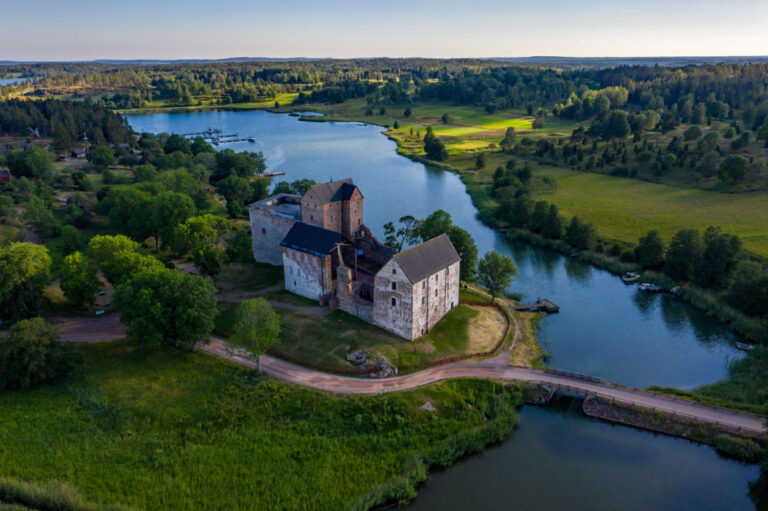
Today, the castle is partly restored and open to the public, offering insight into medieval life in the Baltic.
Next to the castle, the Jan Karlsgården open-air museum presents a collection of traditional Åland farm buildings, relocated and reconstructed to show how rural families lived in centuries past. The nearby prison museum offers an unexpectedly engaging look at local justice history.
History buffs should also visit the ruins of Bomarsund Fortress, a massive Russian fortification destroyed during the Crimean War. Today, the stone remains are scattered through forest and fields, perfect for an afternoon wander.
Try Something Unique
For a truly Åland experience, consider spending an evening in a seaside sauna or even staying overnight in a lighthouse. Tours are available to Sälskär Lighthouse, one of the archipelago’s more remote outposts, where visitors can admire the view and hear tales of its former keepers.
Another option is to visit the island of Kökar, one of the outermost inhabited islands. Its remote monastery ruins and rugged coastlines offer a glimpse of life on the edge of the Baltic.
Food and Drink in Åland
As with most island communities, Åland’s cuisine is shaped by the seasons and a deep connection to local ingredients. Traditional preservation techniques meet modern flair, resulting in a small but growing food scene that champions sustainability.
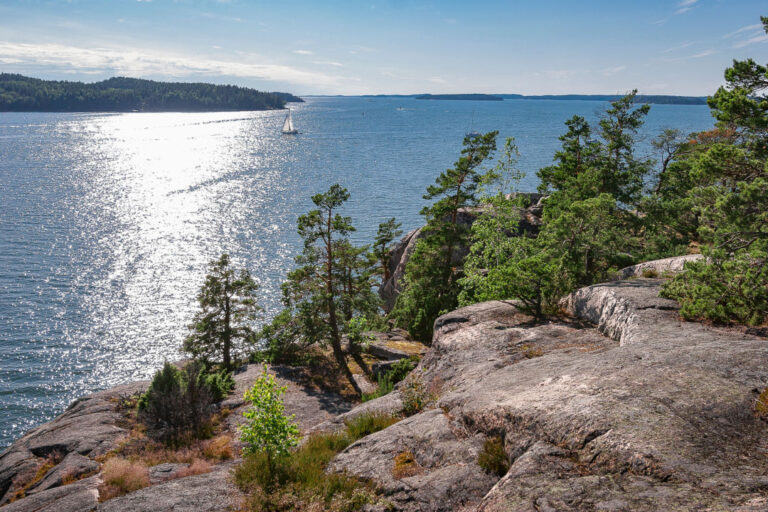
Look for the AX label when dining out, which identifies dishes made using locally sourced ingredients.
Popular specialities include smoked fish, organic cheeses, sourdough bread, and fresh berries. One beloved dessert is the Åland pancake, served with stewed prunes and whipped cream.
For a taste of Åland in a bottle, seek out Amalias Limonad, a sparkling fruit drink made from cold-pressed local berries. Beer lovers can visit the Stallhagen Brewery, which produces a range of craft ales and hosts seasonal events and tastings.
Where to Stay in Åland
Accommodation in Åland is refreshingly varied. Rather than international hotel chains, you’ll find guesthouses, farm stays and eco-friendly retreats scattered across the islands.
Many old barns and rural homes have been converted into cosy lodgings, often run by local families. Granlunda Gård, for example, combines an equestrian centre with a charming farm hotel.
For those seeking complete seclusion, the hermit cottage on the island of Sviskär offers four beds, basic comforts and the rare chance to have an entire island to yourself.
There are also camping grounds and facilities for motorhomes, which remain a popular way to explore the archipelago during the warmer months.
How to Get to and Around Åland
Reaching Åland is easiest by ferry, and for many Nordic visitors, the journey itself is part of the experience. Routes from Grisslehamn and Kapellskär in Sweden take as little as two to three hours.
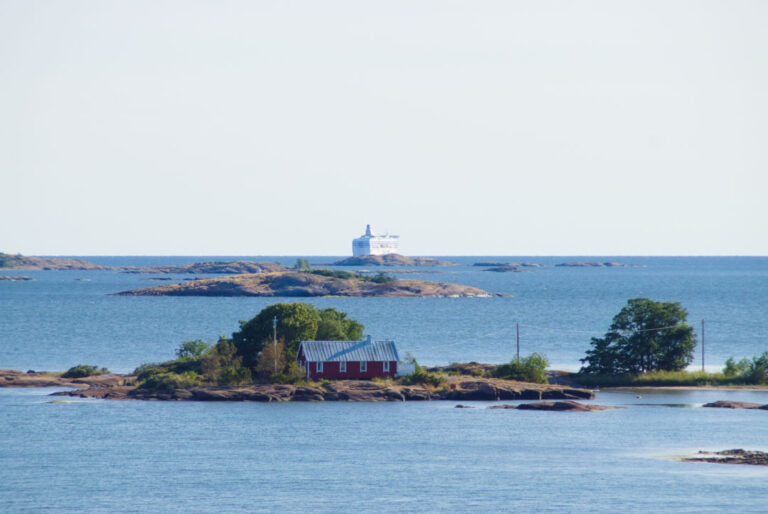
From Stockholm, ferries operated by Viking Line and Tallink Silja sail daily, taking around five and a half hours and passing through the spectacular Stockholm archipelago.
From Finland, ferries connect Åland with Turku, Naantali and Helsinki. Some routes also include stops in Estonia. If you’re travelling in the summer or with a car, it’s wise to book your crossing well in advance.
Once in Åland, local ferries link many of the smaller inhabited islands. While advance reservations are usually required, standby lanes are often available at the larger harbours. It is possible to travel without a car, thanks to a public bus system and the island’s compact size, but some rural areas may require more planning.
Åland is also served by flights from both Helsinki and Stockholm, offering a quick alternative to the ferry routes. The website of Mariehamn Airport is a good place to explore your options.
In fact, the region is actively exploring electric aviation and may soon become one of the first places in Europe to launch regular electric passenger flights.
When to Visit Åland
Most visitors come during the summer months, when the weather is at its warmest and daylight stretches well into the evening. Outdoor activities, swimming, markets and festivals are in full swing during this time.
Spring brings blossoming trees and bird migrations, making it a good time for nature enthusiasts. In autumn, the forests turn golden and the air becomes crisp, perfect for long walks and peaceful getaways.
While winter is quieter, the islands do not shut down entirely. Mariehamn takes on a cosy charm, and some locals even enjoy skating on frozen inlets when conditions allow.
Is Åland Worth Visiting?
For anyone curious about the Nordic region beyond the obvious highlights, Åland offers a deeply rewarding experience. Its blend of nature, culture, history and local pride is unlike anywhere else in Scandinavia. Slow travel is not just possible here—it’s encouraged.


Very nice pictures. There is also useful information in the text about Åland. Åland is worth a visit. It is a must!